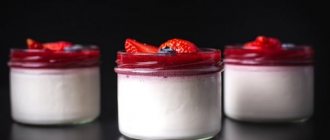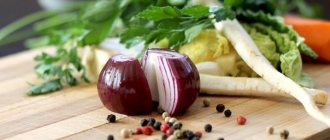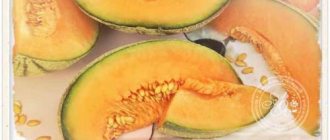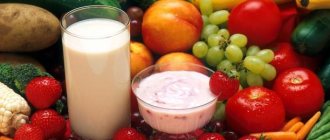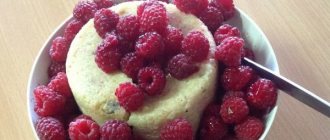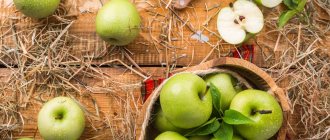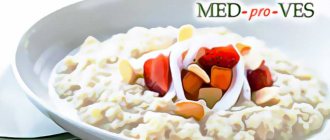Millet is considered the oldest grain crop consumed to this day. It used to be called golden grain. It received this name not only because of its golden hue - the composition of the grain crop is incredibly rich in nutrients and vitamins. Millet for weight loss began to be used not so long ago. However, over the course of several years, the millet diet has gained recognition not only in Russia, but also abroad.
Millet as a dietary product
The grain crop has a wide range of colors: brown, brown and even red. Although many are accustomed only to its yellow color. This is no coincidence, since yellow millet contains a record amount of vitamins, nutrients and minerals, while the calorie content remains low. Therefore, millet porridge has been known to everyone since childhood, because it is served in kindergartens, schools, and prepared by parents. It is a unique source of benefits for a growing body, as well as a way to lose weight for those who want to get rid of extra pounds.
Grain composition
The unit of composition analysis is usually 100 grams. This amount of millet contains 343 calories. Due to its nutritional function, porridge saturates the body for several hours, which is enough until the next meal. When the energy value is distributed over the daily caloric intake, it can be argued that millet is suitable for healthy and proper weight loss.
What else does “golden grain” contain:
- high content (about 70%) of starch;
- protein, which contains amino acids necessary for the construction of internal bonds (about 15%);
- healthy fats necessary for the normal functioning of all body systems, especially women’s health (3.7%);
- B vitamins, vitamin A, E;
- phosphorus, potassium, zinc and other useful substances;
- fiber, which cleanses the body like a sponge;
- Sugar is contained in very low percentages, so it has virtually no effect on your figure.
Millet cereal, of course, cannot completely replace all products. However, millet is well suited as a component of a diet or a product for a fasting day. The body will not feel much stress due to the transition to a millet diet, since sufficient nutrition will be supplied.
Rules and principles of diet
Millet is one of the most useful and valuable cereal products, which is characterized by the presence in its composition of a rich complex of vitamins, micro- and macroelements. The cereal is rich in vitamins B, A, E, K, which have a positive effect on the condition of the skin and hair, normalize the functioning of the nervous system, and improve the functioning of the digestive tract.
Did you know? Millet is one of the most ancient cultivated plants; historical mentions of cultivation date back to 7 thousand years BC. e.
Among the mineral components in the composition of millet the following can be noted:
- iron - improves blood composition, enriches it with oxygen;
- fluoride - strengthens tooth enamel, maintains dental health;
- manganese - normalizes metabolic processes;
- silicon - helps maintain the beauty of hair, nails and skin;
- copper - makes fabrics elastic, prevents the appearance of wrinkles.
Millet porridge is easily digestible by the body, quickly saturates it, gives energy, does not cause a feeling of hunger, thereby preventing the appearance of irritability, depression, and apathy.
What can you eat while dieting?
The millet porridge diet is quite easy, simple, and suitable for almost all people, even those who suffer from chronic illnesses. Its essence lies in the fact that for five days you should eat millet porridge prepared in a special way. If you follow the basic rules of such unloading, you can lose about 2.5-3 kg without harm to your health. Of course, the main ingredient of the millet diet is the porridge of the same name, prepared without the use of spices, in particular, salt, pepper or sugar.
Important! Experts do not recommend following a diet for more than 5 days. It is allowed to repeat the course a month later.
In addition, the following products are allowed:
- low-fat yogurt;
- fruits or citrus fruits: apples, bananas, oranges;
- vegetables: carrots, beets, zucchini, celery, cabbage;
- nuts: walnuts, almonds, cashews;
- boiled meat or low-fat fish;
- fermented milk products: kefir, sour milk, yogurt, fermented baked milk, low-fat cottage cheese.
Drinks allowed in the diet include still mineral water, green tea, and herbal infusions.
What is prohibited to consume
There are a number of foods that are unacceptable during the millet diet.
Pay attention to the benefits and harms of eating millet porridge during pregnancy.
Namely:
- alcoholic drinks;
- spices: sugar, salt, pepper and other spices;
- sweets, flour products;
- coffee and strong black tea;
- smoked meats, any semi-finished products;
- fatty and fried foods.
To achieve maximum effect in the process of losing weight, experts advise strictly adhering to your diet and drinking enough clean water per day - at least 30 ml per 1 kg of weight.
Useful properties of millet
Thanks to its composition, millet is one of the most useful products today. It is included in the diet of most people, regardless of gender and age. In addition, people with heart problems should definitely include this grain crop in their diet. Potassium, which is part of it, has a beneficial effect on the functioning of the cardiovascular system.
The liver and circulatory system are also not left out. Our ancestors loved millet very much and valued it worth its weight in gold. When consuming millet, blood circulation improves and the body receives a vigorous boost of energy. The liver is influenced by lipotropic substances that can block the flow of fat and help get rid of what has already accumulated. This property was also noticed by nutritionists, who now recommend using millet as a dietary product.
Antioxidants, which are contained in large quantities in fiber, cleanse the body of “food waste” in the form of waste and toxins. These harmful substances interfere with the normal rate of metabolic processes, causing stagnation and swelling. They also prevent those who dream of a slim figure from losing excess weight.
Due to its low sugar content, millet porridge is recommended for diabetic diets, and not only for weight loss. It can and should also be eaten in case of diseases of the gastrointestinal tract, since it envelops the walls of the stomach, softens the process of food digestion and is not at all difficult for the pancreas. So, even with inflammation, porridge is recommended by nutritionists, although most products, by the way, are strictly prohibited.
Who is not recommended to eat millet?
Dishes made from millet cereals fit perfectly into the diet of those losing weight. However, despite all the beneficial properties collected in one plate, not everyone is recommended to consume porridge. Some properties of millet can intensify or make illnesses more obvious; under certain conditions, health may worsen.
Therefore, if the following conditions are present, millet consumption should be reduced or completely stopped:
- Pregnancy and the period of feeding a child.
- If the stomach is characterized by a low level of acidity.
- Gastritis (with this disease, only a doctor can prescribe the right diet).
- If you are gluten intolerant, consuming millet can be life-threatening.
- Exacerbation of diseases of the gastrointestinal tract; in the chronic stage, without exacerbation, there are no dietary restrictions on millet porridge).
- Men should not eat millet porridge in large quantities, since the substances contained in golden porridge cause problems with potency.
- For diseases of the thyroid gland, since millet has the property of blocking the flow of iodine into the body, therefore, under this condition, it is better to eliminate porridge from the diet.
Thus, in the presence of these diseases, a diet based on millet porridge is contraindicated. Fasting days on porridge and mono-diets are also prohibited. Long-term consumption of millet in large quantities can lead to memory impairment. Substances contained in millet block the possibility of its entry and absorption by the body. In this regard, problems with the health of the thyroid gland are possible.
However, with a normal balanced diet, millet will not cause any dangerous problems. Don't be afraid to eat millet porridge; it is healthy if there are no contraindications. In any case, if you have doubts and uncertainty, it is better to talk to your doctor. He will be able not only to give consent or disagreement, but also to suggest in what quantities you should consume millet.
Advantages and disadvantages
| pros | Minuses |
|
|
Useful properties of millet
Even if you have allergies, you can and should eat millet porridge. It is one of the most hypoallergenic products, which is why it is prepared in large quantities in kindergartens and schools. In addition, porridge is indicated for those who suffer from liver diseases, inflammation of the pancreas, diabetes, and is especially prescribed for various digestive disorders.
Why is this porridge so healthy and is it eaten much more often than other cereals? The answer is quite simple - it is easily digestible and does not put a strong burden on the organs of the gastrointestinal tract. In addition, nutritionists attribute to its properties cleansing the body of toxins and reducing inflammation. It is prescribed in hospital diets during antibiotic treatment, as it can restore the balance of vitamins and macronutrients necessary for the body.
Millet for weight loss: does it help?
As a rule, many people who are losing weight are afraid to eat porridge, since it is known for being too high in calories. However, is this really so? Yes, their energy value is indeed high (approximately 340 kcal per 100 g of product), but at the same time they are also nutritious.
Having eaten porridge at breakfast, a person will not have to go hungry, saving himself with snacks; he will be satiated with cereal until the next meal. Therefore, when eating porridge, a person losing weight eats less than he could consume if he remained hungry.
In addition, on a diet, the body is deprived of many vitamins and nutrients that it needs for normal functioning. Porridges are high in vitamins and minerals, so they can become valuable sources of benefits for the body while losing weight.
Why should you eat millet?
There are several points that elevate millet over other cereals for weight loss. Among them:
- reducing sugar levels in the body;
- dissolving fats and preventing their accumulation;
- amino acids and vitamins for the normal functioning of all body systems;
- slowing down the aging of skin and internal organs;
- acceleration of metabolism;
- easy digestion and minimal stress on the digestive organs;
- saturation function.
When losing weight, nutritionists recommend eating millet porridge. It will help you get rid of extra pounds and prevent those who are losing weight from ruining their own health. However, there are a number of rules, if followed, the porridge will indeed be dietary. The cooking method and number of servings should be selected correctly. Otherwise, the desire to lose weight may result in weight gain.
How to properly prepare millet for weight loss?
If you cook porridge in the traditional way with butter and aromatic spices, you will not get a dietary product. The same as if you add millet cereal to any baked goods. If you cook millet correctly, its calorie content will be only 90 kcal per 100 grams.
To prepare the porridge you will need 1 glass of millet and 3 glasses of water, as well as 40 minutes of free time. One glass of water should be brought to a boil, and the cereal should be washed with this boiling water to get rid of dust and dirt accumulated on it. Then you need to pour the millet into a pan with a fairly thick bottom. Pour in the remaining two glasses of water and bring to a boil. The next step is to put a lid on the pan and turn off the heat, but this does not mean that the porridge is ready, it needs to rest for half an hour. There is no need to pour out the water; the millet will absorb it during rest.
After 30 minutes, when the cereal has swollen enough, you should divide the entire amount into 4 equal parts, these will be 4 meals. Adding salt or sugar to the dish during a millet porridge diet is prohibited, as are aromatic seasonings. All these things retain water and contribute to weight gain.
Millet porridge diet, reviews and results
A millet diet for weight loss, designed for a week, does not provide the promised weight loss - minus 10 kg. A daily caloric intake of 950-1000 kcal can provide such a result only if the diet is followed for a month or more. However, this cannot be done due to the imbalance of the diet (lack of fat and low protein content). Reviews of the millet porridge diet indicate that weight loss is 3-4.5 kg.
- “... In general, I love this porridge, but I don’t cook it often and eat it with butter. Having learned about such a diet, I decided to stick to millet. I ate 4 tablespoons three times a day, included vegetables for lunch, and kefir for an afternoon snack and dinner. Without oil, it is tasteless and bitter, although I boiled it for several minutes and drained the first water. You won't be happy to eat it. I only lasted for four days, as constipation and bloating appeared on top of everything. My mistake is that I needed to eat more vegetables and salads, but I strictly followed the instructions. I didn’t feel like eating, it was a really filling diet. It was a little diuretic, but that’s understandable, because the porridge is without salt. The weight loss in 4 days was only 700 g. I prefer diets with vegetables and meat or fish. I just didn’t have enough of them and had to think about it right away.”
- “...Last year I ate buckwheat, I liked it and I already had experience with such diets. Now I’ve decided to try this one, but if I gain weight, I’ll give it up. But everything turned out to be normal both in terms of appetite and tolerance. I calculated the approximate caloric content of one day, including 3 servings of porridge of 150 g, 300 ml of kefir, 2 apples, 100 g of cottage cheese and vegetable soup - it turned out to be 955 kcal. In principle, it’s normal and you can lose weight, but I didn’t achieve the promised 10 kg in 7 days. Probably, in addition to all this, you need to torture yourself with physical activity every day, and you’re unlikely to lose that much. My result is 4 kg in a week and I’m quite happy with it. Now I want to switch to a balanced diet with fish, vegetables, cottage cheese, kefir and vegetable soups. It’s more varied and useful this way.”
- “... I sat several times for 7 days and lost the same amount all the time - 3-4 kilograms. A friend of mine only lost two kilograms, but within a week she began to feel much better. During all this time, I did not feel hungry and there was no heaviness after eating. So I tolerated it very well. During the day I ate more fruits than I should and drank green tea. I completely excluded salt, so the excess liquid was removed well. I can say that after a week this kind of food gets pretty boring and you need to have a lot of patience to see it through to the end. Therefore, I think that the best option is a fasting day once a week. The body will be cleansed and the weight will decrease slightly. Another disadvantage is constipation. It strengthens her more than rice, so she drank sour milk and ate bananas, and also added prunes.”
Basic rules of the millet diet
Millet porridge, in the absence of contraindications, is excellent as a component of the diet and as a product for a mono-diet. So, you can try both options and find the one that suits you.
The most popular diet today is the five-day millet diet. During this time, the person losing weight gets the opportunity to lose 2-3 kilograms. It is important to understand that this is not a mono-diet, and such a five-day diet requires a varied diet. The menu includes fruits, low-fat soups and dairy products.
An approximate millet diet menu for the day may look like this:
- breakfast: millet porridge, a glass of kefir with a minimum percentage of fat, a fresh apple;
- lunch: a small portion of porridge, soup with low-fat broth, light vegetable salad dressed with oil;
- dinner: millet porridge, a glass of low-fat yogurt.
Meals must include snacks in the form of fruits and vegetables. Those who are losing weight should not experience a strong feeling of hunger. The duration of such a diet should not be more than five days. Further uncontrolled use of the nutritional system can negatively affect the health of the body.
Fasting day on millet
Nutritionists have long proven the benefits of fasting days. They help cleanse the body of accumulated debris, reduce the load on internal organs and restart metabolic processes. You need to consume millet throughout the day. You can supplement it with vegetables, but you cannot add salt and sugar. Drinks allowed are green tea and plain water. It is recommended to organize such days once a week, on the same day of the week. Within a couple of weeks, the body will say thank you, those losing weight will feel lightness and an improvement in their overall health.
General rules
Millet is obtained from millet by peeling its grains. A healthier cereal is dranets, which is dark in color. In cooking, polished cereals (yellow) are used - partially freed from the germ and shells. However, it has a rich vitamin and mineral composition and does not contain gluten .
The calorie content of dry cereal is 342 kcal; when cooked, the volume increases several times, resulting in a decrease in calorie content. Loose millet porridge already has a calorie content of 135 kcal and contains 4.7 g of protein, 1.1 g of fat and 26.3 g of carbohydrates per 100 g.
Cereals are rich in dietary fiber, vitamins ( B1 , B6 , PP , from fat-soluble ones - E , K and beta-carotene ) and minerals. It is characterized by a high content of magnesium (100 g contains 20.8% of the daily requirement) and phosphorus (29.1% of the daily requirement). The predominant microelements are cobalt, manganese, molybdenum and copper. Cereals contain the most polyunsaturated fats, followed by monounsaturated and saturated fats.
We can say that this cereal, due to its composition, affects various types of metabolism in the body:
- B vitamins have a positive effect on fat metabolism.
- Cobalt activates enzymes involved in fatty acid metabolism.
- Copper stimulates the absorption of proteins and carbohydrates.
- Potassium maintains water-salt balance, having a diuretic effect.
- Manganese has a positive effect on metabolism, participating in the metabolism of amino acids and carbohydrates. Its deficiency leads to disturbances in carbohydrate and lipid metabolism.
- Zinc is involved in the synthesis and breakdown of proteins, carbohydrates, and fats.
- In combination, zinc, magnesium and selenium are necessary to restore impaired carbohydrate metabolism.
Millet cereal is rarely used for diseases of the gastrointestinal tract, as it is considered coarse and difficult to digest. At the same time, for other diseases ( atherosclerosis , diabetes mellitus ), dishes made from this cereal are useful because they have a lipotropic effect.
Millet porridge also finds a place in the diet of a person losing weight, since it is a source of complex carbohydrates, the breakdown of which occurs slowly, and a lot of energy is spent on its absorption. Slow digestion of complex carbohydrates does not cause sudden spikes in blood sugar. This property is taken into account in case of metabolic disorders (for example, diabetes and insulin resistance) and if you want to reduce weight. Saturation of the body occurs quickly and lasts for a long time.
When dieting during weight loss, use porridge cooked in water. The cereal is first soaked for 10-20 minutes, constantly rubbing with your hands and changing the water several times. This technique relieves it of oxidized fats, which give the finished porridge a specific bitterness. Cook the porridge in the following proportion: 1 part cereal to 2.5-3 parts water. When losing weight, you should avoid adding salt to avoid fluid retention. A serving for those losing weight is 100-120 g.
When following a diet, you must adhere to the following rules:
- Compliance with the drinking regime - 1.5-2 liters of water. You can drink fruit drinks, coffee and green tea without sugar.
- Avoid the consumption of flour products, various sweets, alcohol, salt, sugar and sweeteners, spices.
- Take a vitamin-mineral complex.
- Repeat no earlier than in a month.
- Continue eating cereal after finishing the diet several times a week.
- Moderate physical activity (yoga or walking).
The mono-diet, which is designed for 7 days, provides for one food option - porridge, cooked from a glass of millet without salt and divided into 3-4 servings. To improve the taste, add 0.5 teaspoons of oil per serving (sesame, olive, peanut or walnut). Compliance with the drinking regime is mandatory. However, it is better to stay on such an unload for 1-2 days, since the diet is not balanced, which can affect health. During this time, excess liquid will disappear, and with it up to 1.5 kg.
Such nutrition does not cover the body's needs for protein and vitamins. Diets low in protein lead to muscle loss. You can lose weight, but without protein your metabolism will slow down and in the future you will need to constantly limit your diet to prevent weight gain.
The second diet option is more varied, since you can also eat other foods. You can keep it for 7 days. It contains some protein, but is very strict and low-calorie, so the millet diet can get rid of 10 kg in 7 days.
- Breakfast: 100 g of porridge, 100 ml of yogurt or 100 g of cottage cheese (or 4 egg whites).
- Snack: 200 ml kefir (milk).
- Lunch: vegetable soup and 200 g of millet porridge. The soup can be replaced with vegetable stew without oil.
- Dinner: 100 g of porridge and unsweetened fruit.
The most acceptable option is to replace breakfast with porridge seasoned with a teaspoon of olive oil. When cooking, you can add dried celery root, bay leaf or 2 cloves of garlic (the latter ingredients are removed at the end of cooking). The finished porridge can be seasoned with dill, parsley, and green onions. To add variety and improve the taste, the porridge can be cooked with pumpkin, mushrooms, tomatoes, any type of cabbage, celery, seasoned with coriander and nutmeg. This breakfast fills you up and you won’t feel hungry for the next 4 hours.
During the day, you should adhere to a balanced and healthy diet, including eggs, berries and fruits, vegetables and various greens, seafood, fermented milk drinks, low-fat fish and meat, unsweetened juices, tea and coffee without sugar.
For example, a snack after breakfast may consist of fruits and dairy products. Lunch should contain a protein dish and vegetables. Dinner is also a protein dish with vegetables. Remember that if you want to lose weight, you should not replace dinner with porridge. Carbohydrates eaten in the evening during a sedentary lifestyle will create glycogen in the liver, which turn into fat deposits.
Cleansing the body with millet has nothing to do with a diet for the purpose of losing weight. Since in this case the cereal needs to be undercooked and during the day you need to eat only porridge and vegetables. Drinking green tea and enough water is allowed. The cleansing course lasts a week. You can soak the cereal overnight and eat it raw, 1-2 tablespoons before each meal. Only vegetables and fruits are allowed to be consumed during the week.
There are also known recipes for cleansing the kidneys of microliths (sand). Millet has an anti-inflammatory and pronounced diuretic effect, the latter property is useful in the presence of sand in the urinary system. Here are some simple recipes in which the algorithm of actions is the same, but they differ in the number of ingredients, and, consequently, in the concentration of the drink.
Pour half a glass of washed millet into a liter of boiling water and leave overnight. The next day, strain and take an infusion of 100-150 g during the day (preferably before 18 hours). Carry out treatment for 7-14 days. Millet can be used up to three times, after which you can take a new one. Vegetable dishes should predominate in the diet, try to consume less salt, tea and coffee.
Pour half a kilogram of cereal into 2.5 liters of boiling water. Let cool and strain. Drink a glass 30 minutes before meals. The course lasts up to 1 month.
One can argue about the dissolution of stones. Normal urine has a pH of 5 to 7 (slightly acidic). This can be determined by testing with pH test strips. Some stones (phosphate) are formed in an alkaline environment (from 7.5-8), and since millet alkalinizes urine, it cannot be used in this case.
